Finding a substitute for Brie cheese can seem like a culinary quest on its own.
Good news, though: we’ve sifted through the cheese aisle to bring you the top five picks.
And guess what? You won’t miss Brie one bit.
Camembert steps up as an easy swap, rich and creamy, just like our beloved Brie.
Ever heard of Gouda? It’s not just for sandwiches; aged Gouda brings a deep, satisfying flavor.
If you’re after something with a bit of tang, Goat cheese has got your back.
In this list, we’re not just throwing options at you.
We’ll tell you why these choices rock and how best to use them.
Bold flavors, unforgettable tastes – that’s what this guide is all about.
What is Brie Cheese?

As mentioned above, brie cheese is a type of cheese from France.
It’s in the same family as camembert, but it’s easier to find and has a more mild taste.
Brie cheese is a soft cheese and is white.
It’s made from cow’s milk and has a mild, creamy flavor with a bit of earthiness to it.
Some people enjoy brie because it doesn’t have as much tang to it as other cheeses like camembert or bleu cheese.
Brie is well known for its rind, which features a white mold.
This mold helps give brie cheese its distinct taste and texture.
There are many different sorts of brie – some have a stronger flavor than others, depending on where they were made and the ingredients used to make them.
Brie cheese is very versatile for those who enjoy this type of cheese.
It can be served with fruit or crackers and used in cooking.
Brie goes well on a pizza or in a grilled cheese sandwich.
The 5 Best Substitutes for Brie Cheese
Brie cheese is a beloved, creamy cheese with a rich flavor and smooth texture.
However, if you’re looking for alternatives to Brie cheese due to dietary restrictions or personal preferences, there are several substitutes available that can provide similar characteristics.
In this guide, we will explore the top 5 substitutes for Brie cheese, comparing their key characteristics and providing suggestions on proper ratios to ensure the best results in your recipes.
| Substitute | Key Characteristics | Proper Ratio |
|---|---|---|
| Camembert Cheese | Soft, creamy cheese with a similar taste and texture to Brie | Use the same amount of Camembert cheese as called for in the recipe |
| Goat Cheese | Tangy and slightly tart cheese with a creamy texture | Use the same amount of Goat cheese as called for in the recipe |
| Reblochon Cheese | Semi-soft cheese with a nutty and earthy flavor | Use the same amount of Reblochon cheese as called for in the recipe |
| Chevre Cheese | Creamy and tangy goat cheese | Use the same amount of Chevre cheese as called for in the recipe |
| Coulommiers Cheese | Soft, creamy cheese with a mild and buttery flavor | Use the same amount of Coulommiers cheese as called for in the recipe |
Now let’s dive into each substitute in more detail:
1 – Camembert Cheese
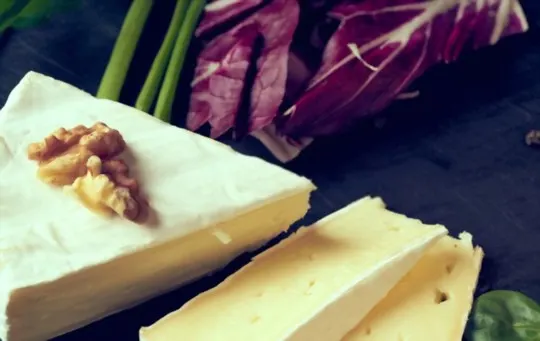
This is another French-style soft white cheese similar to brie in its flavor and texture.
However, camembert tends to be a little spicier.
Camembert cheese is known for the white mold on its rind, which adds to its earthy flavor.
This type of cheese typically has hints of nuttiness.
The most important thing with camembert cheese is making sure it’s at room temperature before eating it.
It crumbles very easily. When it’s warm, it’s soft and creamy.
It tastes earthy with a hint of sweetness. At room temperature, the camembert is very smooth and luscious.
Camembert is wonderful paired with fruit, crackers, or bread.
It’s also good on its own or with jam, honey, or other types of spreads.
- Key Characteristics: Camembert cheese is a soft and creamy cheese with a taste and texture similar to Brie. It is a suitable substitute in recipes that call for Brie cheese.
- Proper Ratio: Use the same amount of Camembert cheese as called for in the recipe. Adjust the quantity based on your taste preferences and recipe requirements.
2 – Goat Cheese
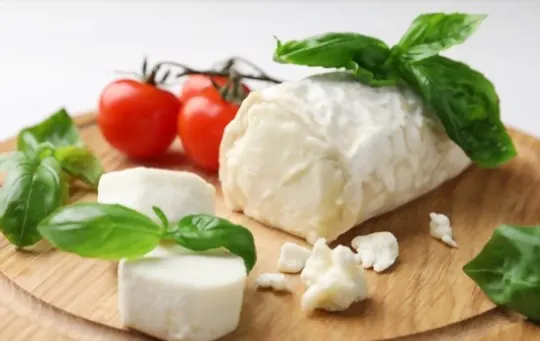
Goat cheese has been around for thousands of years, and it’s still popular today.
Goat cheese tends to have more tang than brie does, but brie is slightly creamier.
There are several different types of goat cheese, but they share the same basic properties.
First and foremost, goat cheese has a sharp flavor that’s not as common as other cheeses.
While it may be sharp, there are also nutty undertones to this type of cheese.
Goat cheese can be crumbled or sliced.
Some people enjoy pairing goat cheese with fruit – lemons, figs, and grapes are popular choices.
In addition, goat is a great cheese to cook with. It’s best cooked rather than eating it raw.
Goat goes well in sandwiches and quiches, too.
- Key Characteristics: Goat cheese has a tangy and slightly tart flavor with a creamy texture. It can provide a unique and delicious alternative to Brie cheese in various dishes.
- Proper Ratio: Use the same amount of Goat cheese as called for in the recipe. Adjust the quantity based on your taste preferences and recipe requirements.
3 – Reblochon Cheese
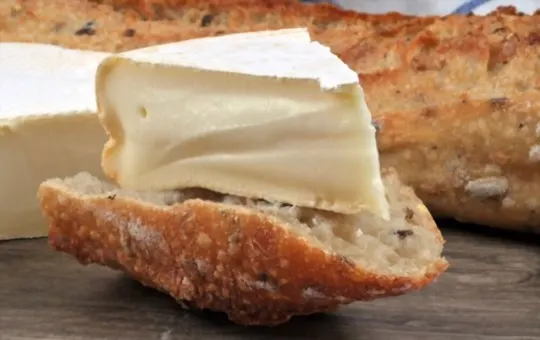
Reblochon is a soft French cheese that’s similar to brie.
It is also made from cow’s milk and is in the same family as camembert, which means it tastes very similar to brie.
The main difference is in its texture – reblochon has more of a creamy taste than brie does.
This cheese is on the milder side but still has a very earthy flavor.
Reblochon may be more difficult to find than brie or camembert.
Typically, reblochon is only available at specialty stores and some grocery stores in Europe.
This cheese is often served with meat or potatoes, especially in the fall or winter.
It’s also served with fruits like pears and grapes, as well as jams.
- Key Characteristics: Reblochon cheese is a semi-soft cheese with a nutty and earthy flavor. While not identical to Brie, it can add a distinct and delightful twist to your recipes.
- Proper Ratio: Use the same amount of Reblochon cheese as called for in the recipe. Adjust the quantity based on your taste preferences and recipe requirements.
4 – Chevre Cheese
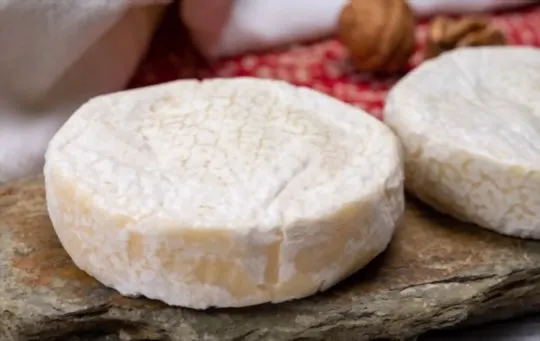
If you’re looking for a cheese that’s even milder than brie, chevre is the way to go.
Chevre is a type of goat cheese but is extremely creamy in texture.
It has a very distinct flavor. It may be too strong for some people.
It’s also tangier than most soft cheeses like brie.
Chevre cheese is often paired with pears, figs, or other types of fruit that have a strong flavor to offset its taste.
However, you can enjoy this cheese on its own as well.
It’s great during the summer months when it’s warm outside.
- Key Characteristics: Chevre cheese is a creamy and tangy goat cheese that can provide a unique flavor profile as a substitute for Brie cheese. Its smooth texture makes it versatile in various recipes.
- Proper Ratio: Use the same amount of Chevre cheese as called for in the recipe. Adjust the quantity based on your taste preferences and recipe requirements.
5 – Coulommiers Cheese
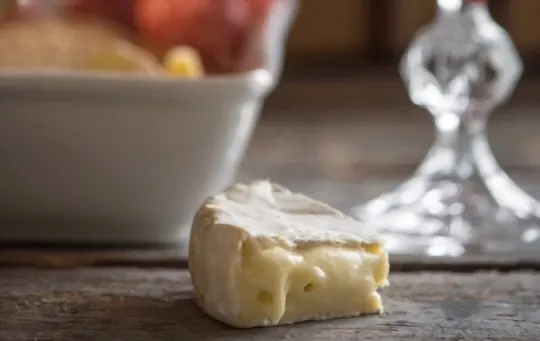
Coulommiers is a mild French cheese. It’s similar to brie in its flavor and texture but not as rich.
Coulommiers have a soft, creamy consistency that melts in your mouth when you eat them.
This cheese also has a smooth finish – there aren’t any strong flavors or textures that stand out with this type of cheese.
This is another type of cheese that’s best served at room temperature after being left out for a couple of hours, so you may want to plan to use coulommiers in a recipe or pair it with fruit.
Coulommiers go well with figs, apricots, pears, grapes, and other types of fruit.
It’s also great on its own, with some crusty bread.
- Key Characteristics: Coulommiers cheese is a soft and creamy cheese with a mild and buttery flavor. It closely resembles Brie cheese and can be used as a suitable substitute in recipes.
- Proper Ratio: Use the same amount of Coulommiers cheese as called for in the recipe. Adjust the quantity based on your taste preferences and recipe requirements.
Conclusion
Brie cheese is delicious, but what happens when you can’t eat it? The five substitutes listed in this article share very similar traits to brie, so they’re all great choices if someone says they can’t eat dairy.
The best thing about them is that you can enjoy their creaminess and earthy flavors in various ways – whether hot or cold, on their own or paired with fruit; these substitutes are perfect replacements for brie cheese.
If you’re missing brie but can’t eat dairy, try one of these five substitutes instead.
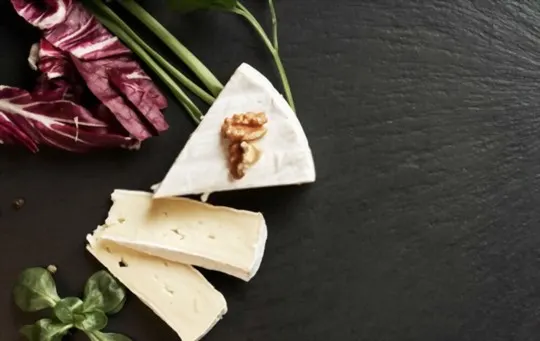
The 5 Best Substitutes for Brie Cheese
Ingredients
- Camembert Cheese
- Goat Cheese
- Reblochon Cheese
- Chevre Cheese
- Coulommiers Cheese
Instructions
- Pick your favorite substitute from the list above.
- Follow cooking directions for your selected substitute with the proper ratio of ingredients.

Andrew Gray is a seasoned food writer and blogger with a wealth of experience in the restaurant and catering industries. With a passion for all things delicious, Andrew has honed his culinary expertise through his work as a personal chef and caterer.
His love for food led him to venture into food writing, where he has contributed to various online publications, sharing his knowledge and insights on the culinary world. As the proud owner of AmericasRestaurant.com, Andrew covers a wide range of topics, including recipes, restaurant reviews, product recommendations, and culinary tips.
Through his website, he aims to inspire and educate fellow food enthusiasts, offering a comprehensive resource for all things food-related.

Leave a comment